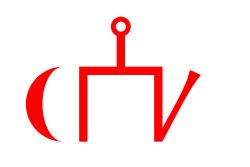Slaget ved Liegnitz
| Slaget ved Liegnitz | |||||||
|---|---|---|---|---|---|---|---|
 | |||||||
| |||||||
| Parter | |||||||
| Mongolske kejserdømme | |||||||
| Ledere | |||||||
| Orda Khan, Tsubotai | Henrik 2. den fromme | ||||||
| Styrke | |||||||
| 20.000 | 40.000 | ||||||
| Tab | |||||||
| ukendt | 30.000 døde ifølge gamle krøniker, formentlig betydeligt færre | ||||||
Slaget ved Liegnitz var et slag mellem mongolske og polsk-tysk tropper ved Legnickie Pole, omkring 10 kilometer sydøst for Liegnitz (nuværende Legnica) i det sydvestlige Polen.
1241 ledte den mongolske general Tsubotai en massiv mongolsk invasion i Centraleuropa. En del af hans armé trak frem gennem Polen.
Ved byen Liegnitz mødte de den 9. april en hær af tyskere, polakker og tropper fra Tyske orden ledet af Henrik 2. den fromme.[1] Mongolhærens bueskytter drev en del af den forenede hær på flugt med en sky af pile, hvorpå de mongolske lansenerer bragede sammen med de mere kraftigt pansrede kristne riddere. Mongolerne veg tilbage for riddernes første overraskende angreb, vendte siden hastigt om og omringede dem, og bl.a. hertug Henrik 2. blev dræbt.[1]
Mongolerne gik fra kampen som sejrherre, men tabene var store, og efter sejren, og nyheden om Ögedei Khans død, vendte hæren atter tilbage mod Asien.[1]
Kilder
- ^ a b c von Flocken, Jan (8. juli 2007). "Mongolensturm – Die Schlacht bei Liegnitz". welt.de. Hentet 6. oktober 2022.
- Grant, R. G.: Slag: Historiens slagfelt, Bonniers, Stockholm 2006, ISBN 978-91-0-011061-1
Medier brugt på denne side
Bitwa pod Legnicą na miedziorycie Matthäusa Meriana Starszego z 1630 roku pod tytułem „Wielka klęska chrześcijan pobitych przez Tatarów”
Banner of Kingdom of Poland in the 14th century
A seal of Duke Premislaus II from 1290 shows the ruler holding a banner emblazoned with a crowned eagle. During the reign of King Ladislaus (r. 1320–1333), the red cloth with the White Eagle was established as the royal banner. The orientation of the eagle on the banner varied; its head could point either upwards or towards the hoist.
A white Malta cross on a black background, one of the insignias attributed to the Knights Hospitaller
From a heraldic Maltese cross with white background.
- Converted from the following PostScript code:
%!
/l{lineto}def
20 420 moveto 290 310 l
180 580 l 300 500 l 420 580 l
310 310 l 580 420 l 500 300 l
580 180 l 310 290 l 420 20 l
300 100 l 180 20 l 290 290 l
20 180 l 100 300 l closepath
fill
showpage
%%EOF Anachronistic representation of the royal banner of the 12th(?) or 13th to early 15th centuries.
The banner of this period would be square in shape. The heraldic eagle is here shown in early modern style.
The black eagle in a golden field was the ensign of the German kings (as opposed to the emperor) in the 12th and 13th century, but in the 14th century, it was gradually re-interpreted as representing the empire. An early reference to such a banner as "imperial" is made in an account of the burial of Charles IV (d. 1378), as der schwartz adler des richs in einem guldin veld .Forfatter/Opretter: Vorziblix, Licens: CC0
The flag of the Golden Horde, as shown in Angelino Dulcert's 1339 map. A similar flag appears in the later Catalan Atlas (1375), providing corroboration.
See also Early Mongol Flags at crwflags.com:
- One of the charges is a crescent and the other looks like a simplified form of the tamga from the flag of Idel Ural. On different copies of the flag, the crescent has different size; it is often smaller than shown here, sometimes even reduced into a simple oblique stroke and conjoined with the other charge into a si[n]gle symmetrical object; the other charge also sometimes lacks the oblique part [2, 3]. It was obviously difficult to draw the charges always the same way. The cities with this flag which are easy to identify are [2, 7, 8]: Sarai, the capital (spelled Sarra) - there is also a depiction of the ruler, "Jani Beg Lord of Sarai" ("Jambech senyor de Sarra"); Tana, present-day Azov, Russia; and Urgench, Uzbekistan (spelled Organci, with a cedilla under the c; nowadays ruined). This flag is a variant of the flag of "Emperor of Sarai" ("Emperador de Sara") from "Libro del conoscimiento de los reinos" [7] and might be the one that had really existed, considering the similarity of its charges with those from the flag of Idel Ural.
- [2] Enciclopedia universal ilustrada, vol. XXI, Espan~a Madrid: Espasa-Calpe S.A., 1968
- [3] Istorija otkric'a i istraz<ivanja, vol. I: Poc<etak istraz<ivanja; Mladinska knjiga, Ljubljana, 1979; Original title: A History of Discovery and Exploration, vol. I: The Search Begins;(C) 1973 Aldus Books Limited, London
- [7] Libro del Conoscimiento. Viajes medievales, vol. I Madrid: Fundacio'n Jose' Antonio de Castro, 2005 ISBN 84-96452-11-5 (complete edition) ISBN 84-96452-12-3 (vol. I) [e9s50]
- [8] A[p]pendices. (Ibid.)
- Tomislav Todorovic, 21 April 2007






